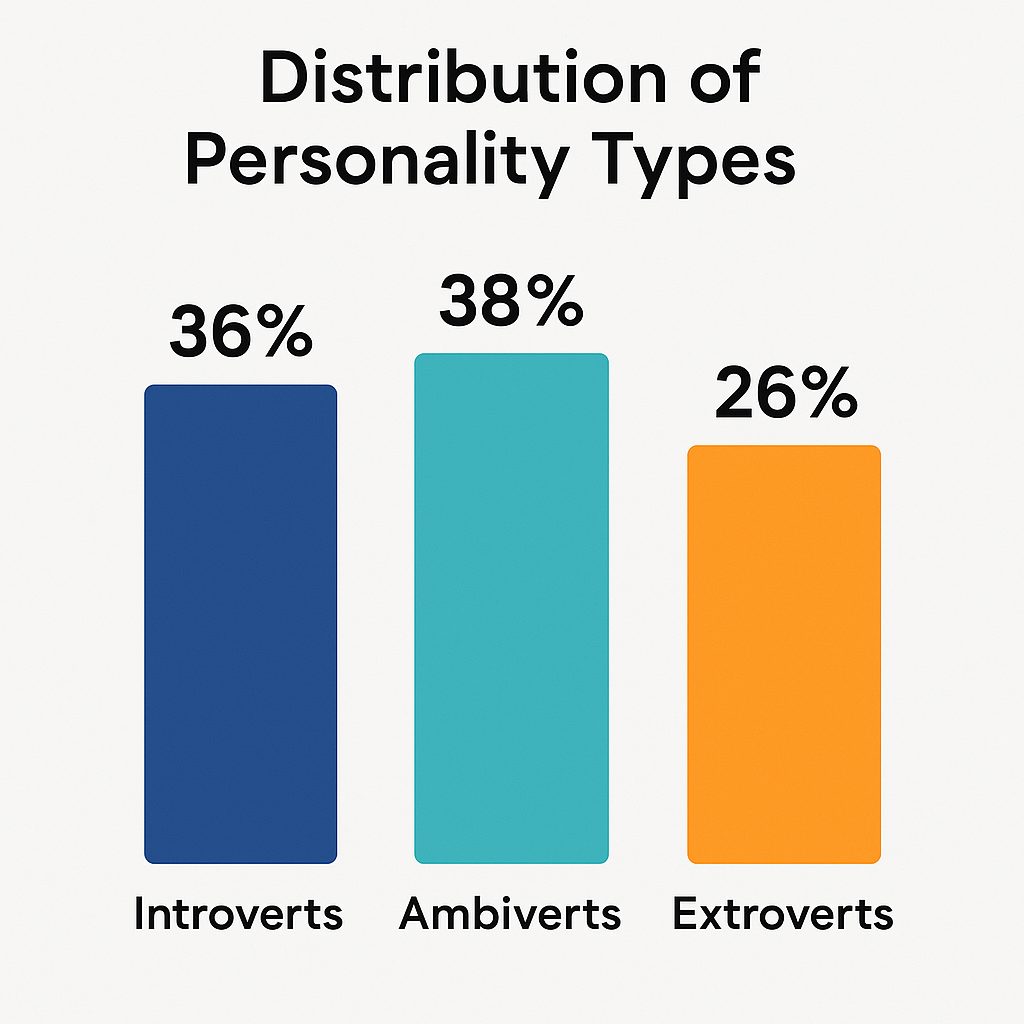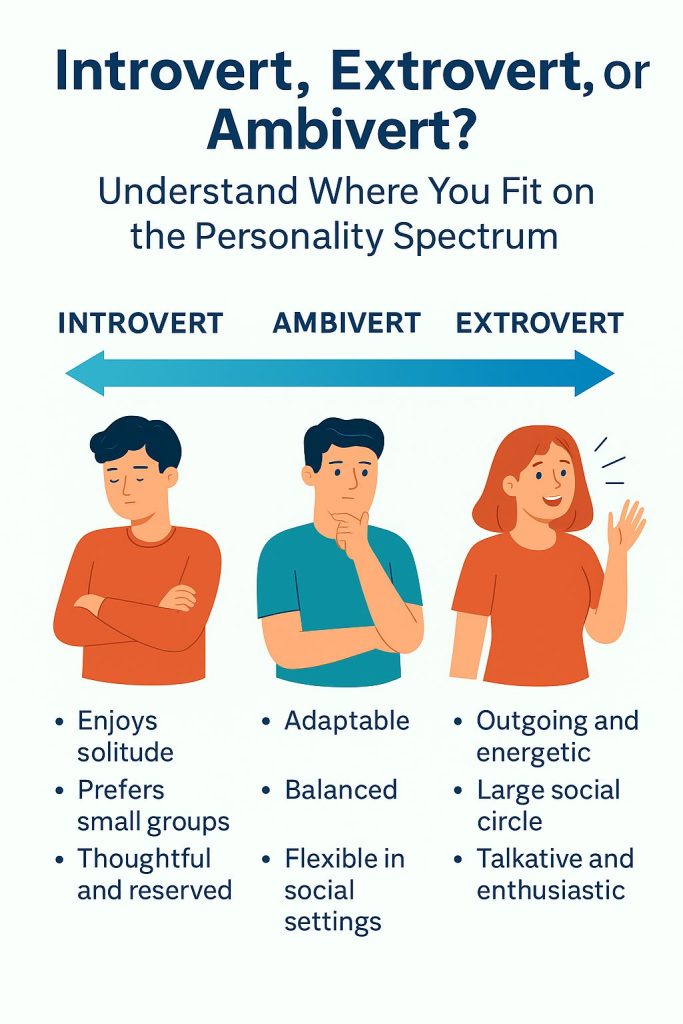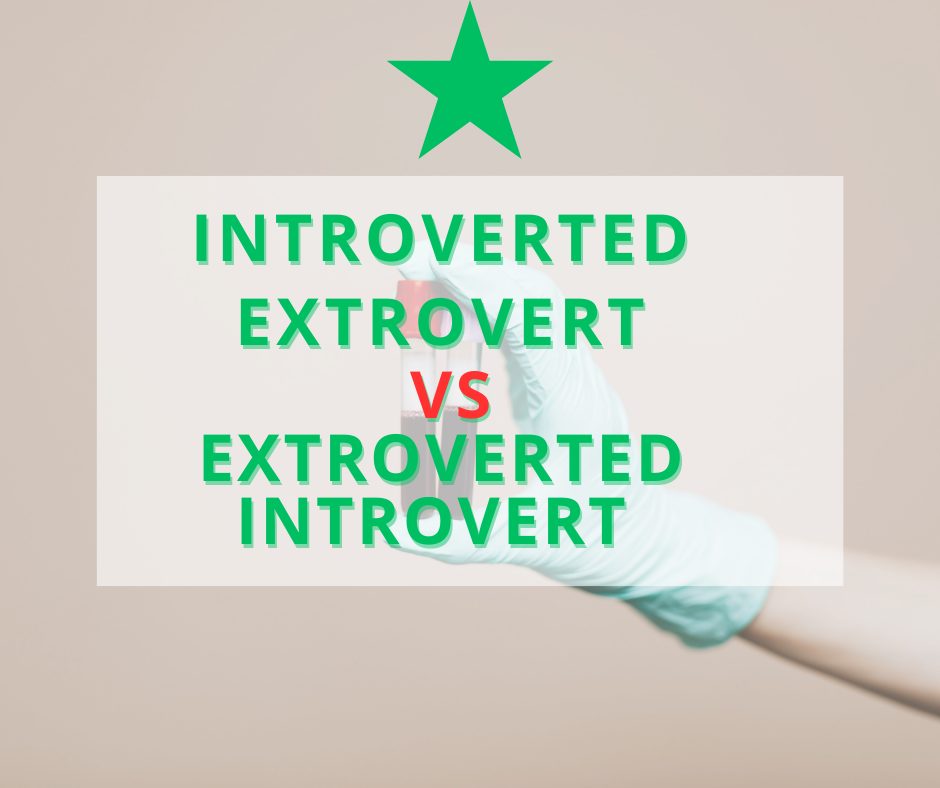Have you ever wondered why some people enjoy big parties, while others feel drained by them? Or why some people seem to live in their heads, while others thrive on talking things out? These differences often come down to personality types — introvert, extrovert, or ambivert.
In this guide, we’ll explore what these terms mean, how to know which one you are, and what it means for your daily life. Whether you’re planning solo trips or building better relationships, knowing your personality type can help you live more happily and confidently.
Understanding Different Personality Types
What You Will Learn
What Is an Introvert?
An introvert is someone who feels more comfortable in quiet places. They enjoy spending time alone or with a small group of close friends. Introverts often think deeply, enjoy writing or reading, and need time alone to recharge after social events. Their inner world is rich and complex, and they process information thoroughly before responding.
Common Signs of an Introvert:
• You prefer deep conversations over small talk
• You feel tired after big social events
• You enjoy time alone and need it often
• You think before you speak
• You process experiences better after they happen
• You prefer writing to speaking in many situations
Introverts are not shy or anti-social. They just process the world differently. Famous introverts include Bill Gates, Emma Watson, and Albert Einstein. These successful individuals have leveraged their introversion to achieve remarkable things, often through careful analysis and deep focus.

What Is an Extrovert?
An extrovert is someone who gets energy from being around others. They enjoy being the center of attention, love group activities, and feel best when socializing. Extroverts often think out loud and solve problems through discussion rather than internal reflection.
Common Signs of an Extrovert:
• You feel excited after social events
• You love meeting new people
• You talk through problems out loud
• You feel bored when you’re alone too long
• You make decisions quickly and confidently
• You prefer verbal communication to written
Extroverts are often seen as outgoing and friendly. But that doesn’t mean they’re always confident — they just express themselves outwardly. Oprah Winfrey, Will Smith, and Richard Branson are great examples of extroverts who’ve used their natural social energy to build impressive careers.

What Is an Ambivert?
An ambivert is someone who has traits of both introverts and extroverts. They can enjoy parties and alone time equally, depending on the situation. Ambiverts are flexible — they adjust based on their mood, energy, or environment. This adaptability can be a superpower in both personal and professional settings.
Common Signs of an Ambivert:
• You enjoy socializing but also need time alone
• You’re comfortable in both small and large groups
• You switch between listening and talking easily
• You don’t always know what you prefer — it depends
• You can adapt your communication style to different people
• You understand both introverted and extroverted perspectives
Ambiverts make up the majority of people. That’s why many personality quizzes show results like, “You’re a mix of both!” This middle-ground position often allows ambiverts to bridge communication gaps between more extreme introverts and extroverts.

Why Does It Matter?
Impact on Relationships
Introverts and extroverts can struggle to understand each other. Knowing your type makes it easier to communicate needs and set healthy boundaries. It also helps in choosing compatible partners and maintaining long-term relationships.
Impact on Work Life
• Introverts may love solo projects or writing tasks
• Extroverts may shine in team roles or sales
• Ambiverts can do both depending on the day
• Understanding your type can guide career choices and work strategies
Impact on Travel Preferences
• Introverts often enjoy solo trips with time to reflect
• Extroverts may prefer group travel with lots of social events
• Ambiverts might plan a mix of both
• Your type can influence how you plan and enjoy vacations

Common Myths and Truths
Myth: Introverts are shy.
Truth: Introverts may enjoy talking — just in smaller settings.
Myth: Extroverts can’t be deep thinkers.
Truth: Extroverts can be thoughtful too — they just express their thoughts outwardly.
Myth: Ambiverts don’t exist.
Truth: Most people fall somewhere between introvert and extrovert.
Myth: You can’t change your type.
Truth: While core tendencies remain, people can develop skills from other types.

Self-Assessment Quiz
Not sure where you fall? Try asking yourself these questions:
Real-World Examples
Michael Jordan: Many wonder if he’s introverted or extroverted. He’s often quiet in interviews (introvert), but confident and energetic on the court (extrovert). Likely, he’s an ambivert.
Your coworker who’s quiet at lunch but leads meetings like a pro? Ambivert.
Your best friend who hates texting but loves video calls? Maybe extrovert.

Practical Tips for Each Type
For Introverts:
• Plan alone time in your day
• Choose solo hobbies like journaling or hiking
• Take breaks during social events to recharge
• Create a peaceful home environment
• Set boundaries with social commitments
For Extroverts:
• Add group activities to your routine
• Try roles that involve people and action
• Stay connected during solo tasks with short calls or chats
• Join clubs or social groups
• Schedule regular social activities
For Ambiverts:
• Pay attention to your energy levels each day
• Learn when to say no or yes to events
• Use your flexibility to connect with all kinds of people
• Balance social and solo activities
• Adjust your schedule based on your energy needs
*Note: also many personalities is juiced from these types, which are for example Introverted Extrovert or Extroverted Introvert and there is also a possibility to change from Extrovert to Introvert or vice versa wich you can find it here
Final Thoughts
You don’t need to fit into just one box. Being an introvert, extrovert, or ambivert is about understanding your energy — where it comes from and how you recharge. This understanding becomes your compass for navigating work, relationships, and personal growth.
This self-awareness can make your travel plans better, your job choices smarter, and your relationships stronger. There’s no best type — only the one that works best for you. The key is to embrace your natural tendencies while staying open to growth and new experiences.
❓ Frequently Asked Questions
Introverts gain energy from being alone, extroverts feel energized by social interaction, while ambiverts enjoy a mix of both and can adapt depending on the situation.
Yes, that’s what we call an ambivert. Ambiverts show both introverted and extroverted traits depending on the mood, setting, or activity.
Taking a personality quiz can help. But in general: if you recharge alone, you’re likely an introvert. If you love being around people, you’re likely an extrovert. If you enjoy both, you’re probably an ambivert.
Ambiverts often have the advantage of flexibility. Studies suggest they may perform better in communication and sales roles because they adapt to different social settings easily
Absolutely. Many introvert-extrovert couples thrive by understanding each other’s energy needs and learning to compromise on social time and quiet time.
Research shows that personality traits like introversion and extroversion have genetic components, but environment and experiences also play a major role.
No. Introverts can enjoy social events but may need time alone afterward to recharge. It’s more about energy management than social skills.
Yes. Introverts may prefer roles with more independence, like writing or programming. Extroverts thrive in social settings like sales or teaching. Ambiverts can adapt to both.




